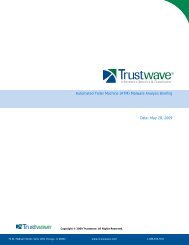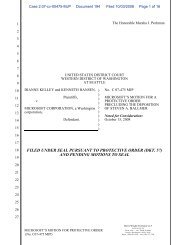The Elmer A. Sperry Award 2006
The Elmer A. Sperry Award 2006
The Elmer A. Sperry Award 2006
You also want an ePaper? Increase the reach of your titles
YUMPU automatically turns print PDFs into web optimized ePapers that Google loves.
OPTIMUM AERODYNAMIC SHAPE DESIGN<br />
<strong>The</strong> successful development of these codes still left an open challenge: the effective use of<br />
CFD for design ultimately requires another level of software which can guide the designer<br />
in the search for improved aerodynamic shapes on the basis of the predicted performance.<br />
In 1988 Prof. Jameson felt that CFD predictions had reached a level of reliability and credibility<br />
where one could seriously tackle this issue, and he redirected the central focus of his research.<br />
Instead of asking how air flows around a wing, he asked what the optimal shape should be<br />
to control the flow of air around it. This led to the realization that one could combine CFD<br />
with control theory to calculate optimum shapes, obtaining the derivative of a performance<br />
measure such as the drag with respect to the shape via the solution of an adjoint problem.<br />
An early example of this published in Science in 1989, is reproduced in Figure 8, which<br />
shows the redesign of the RAE2822 airfoil to minimize the drag coefficient, subject to the<br />
constraints that the lift coefficient is held constant at approximately 1.0 and the thickness is<br />
not reduced. An almost shock-free profile was obtained in five cycles.<br />
12<br />
Figure 8. Redesign of the RAE2822 airfoil by means of control theory to reduce its shock-induced pressure drag.<br />
(A) Initial profile. Drag coefficient of 0.0175. (B) Redesigned profile after five cycles. Drag coefficient of 0.0018.






